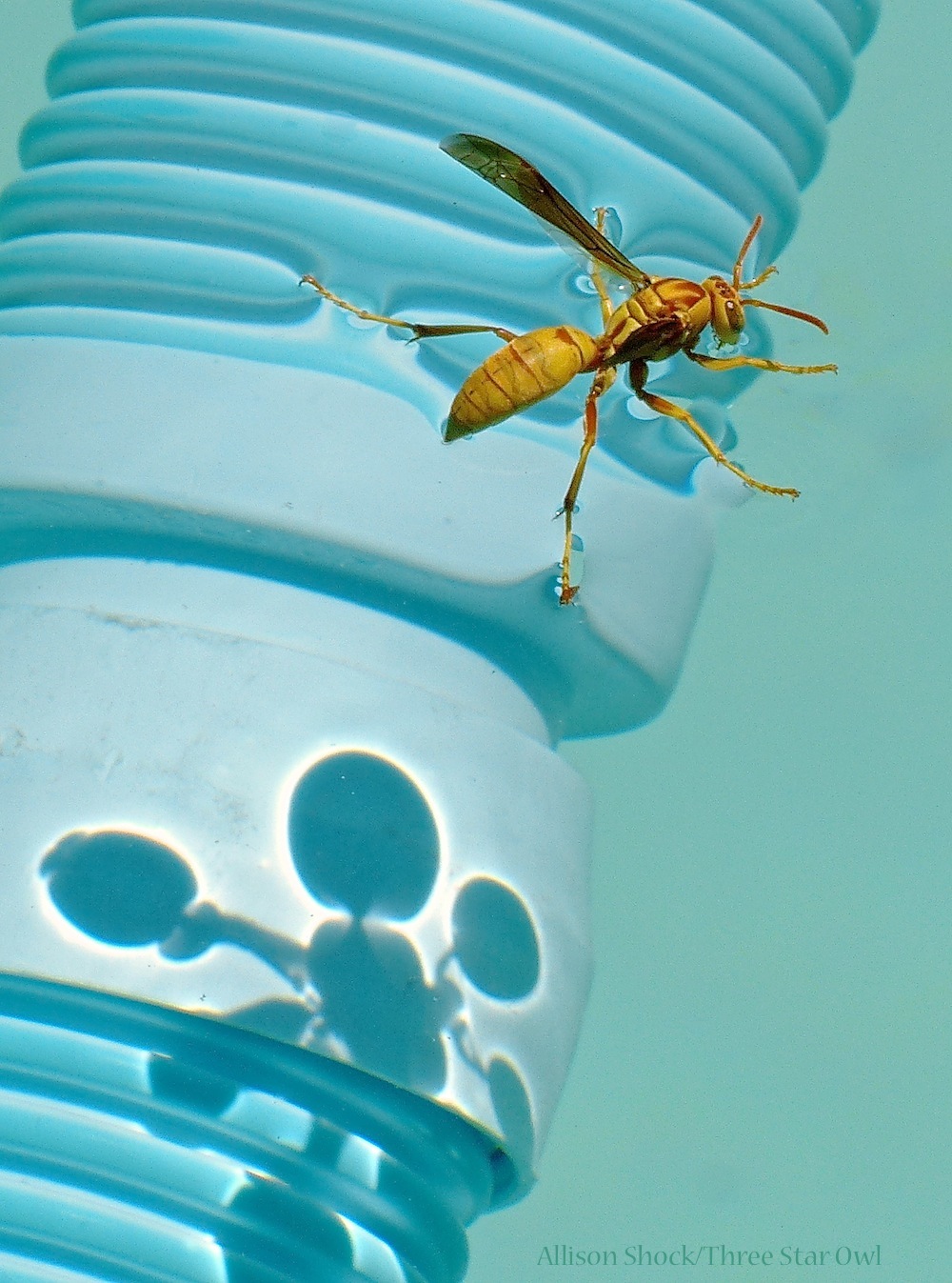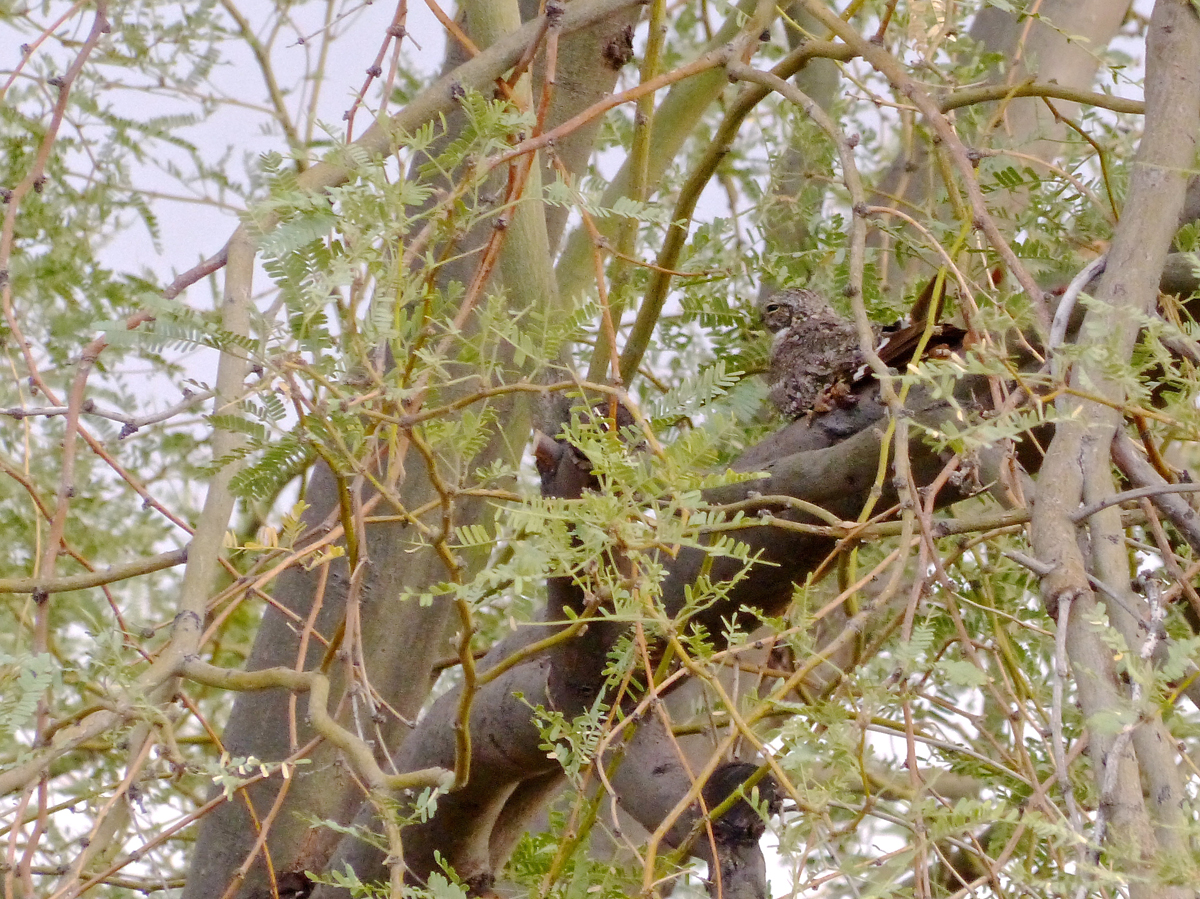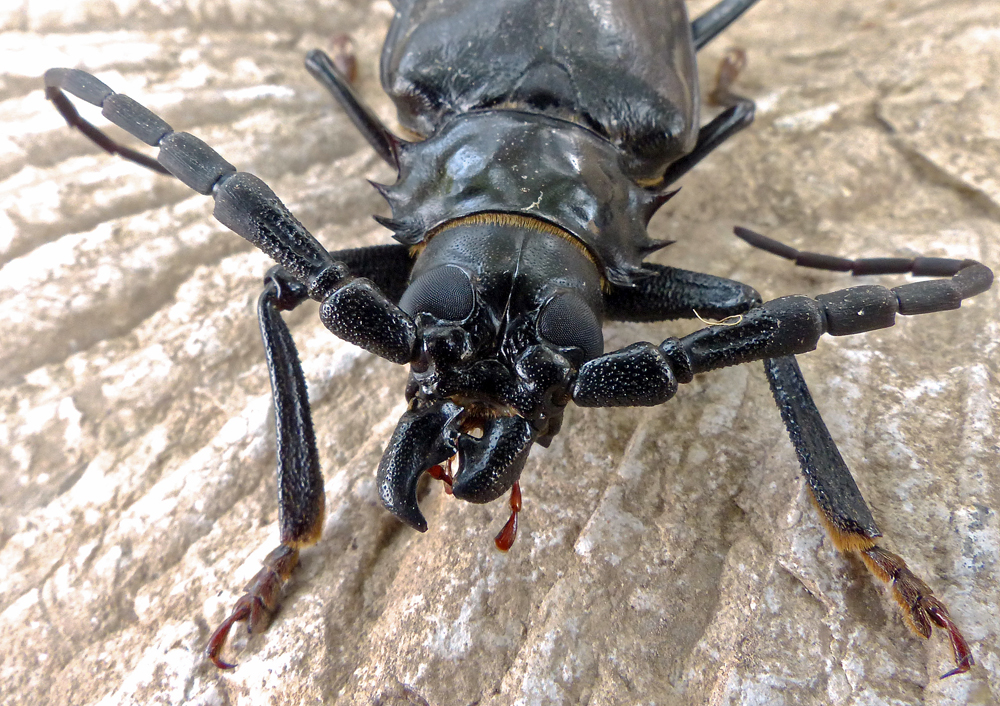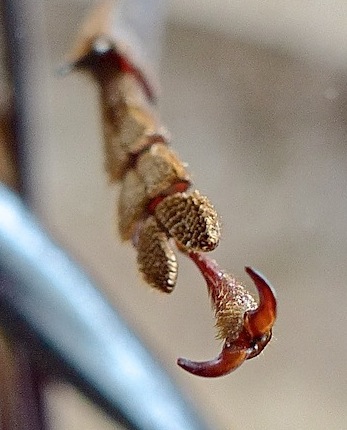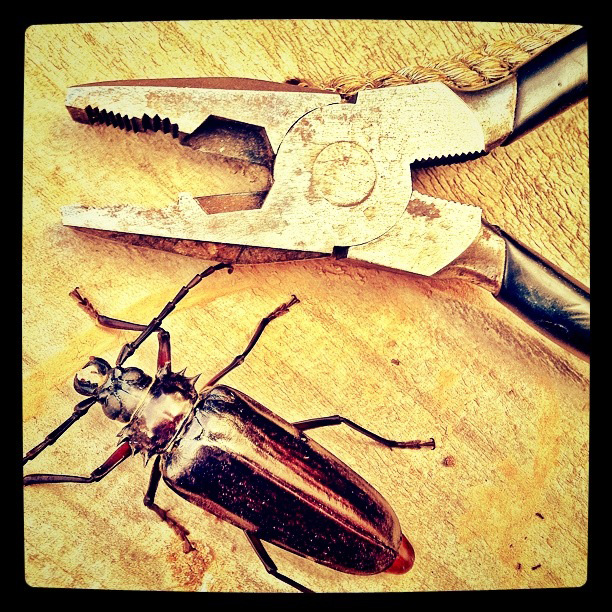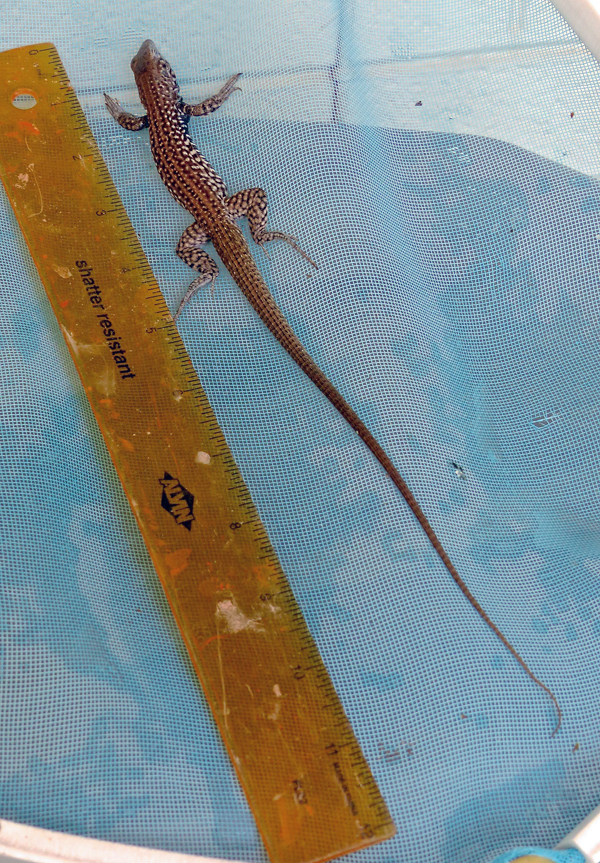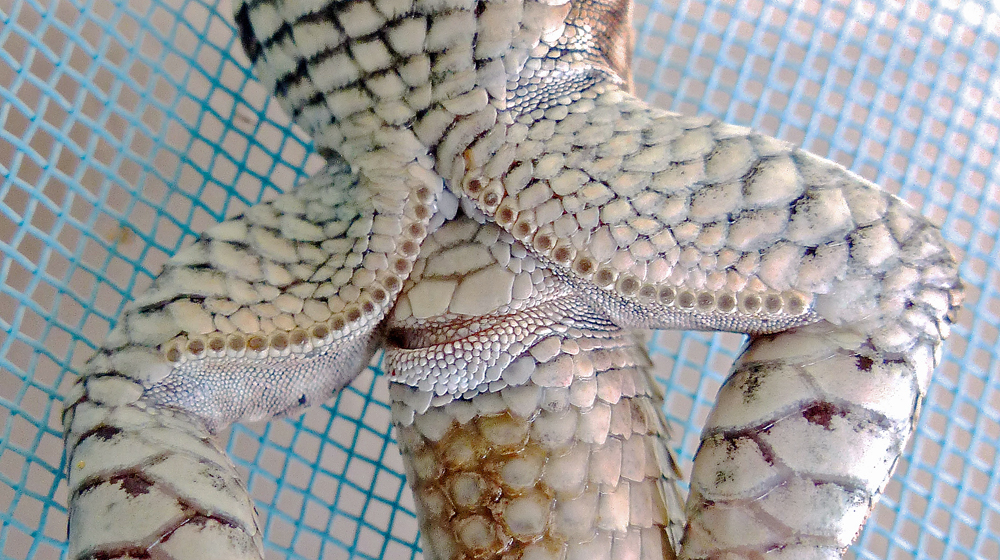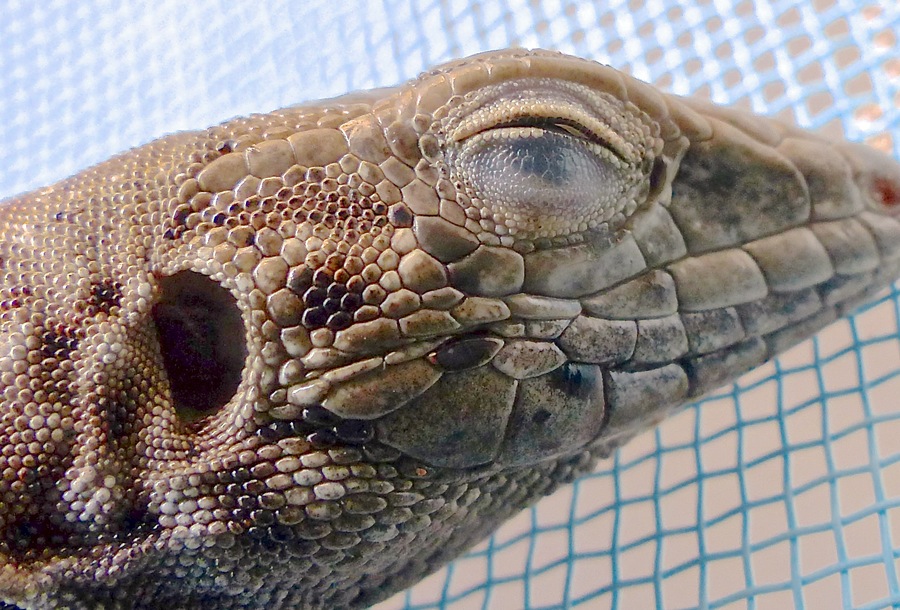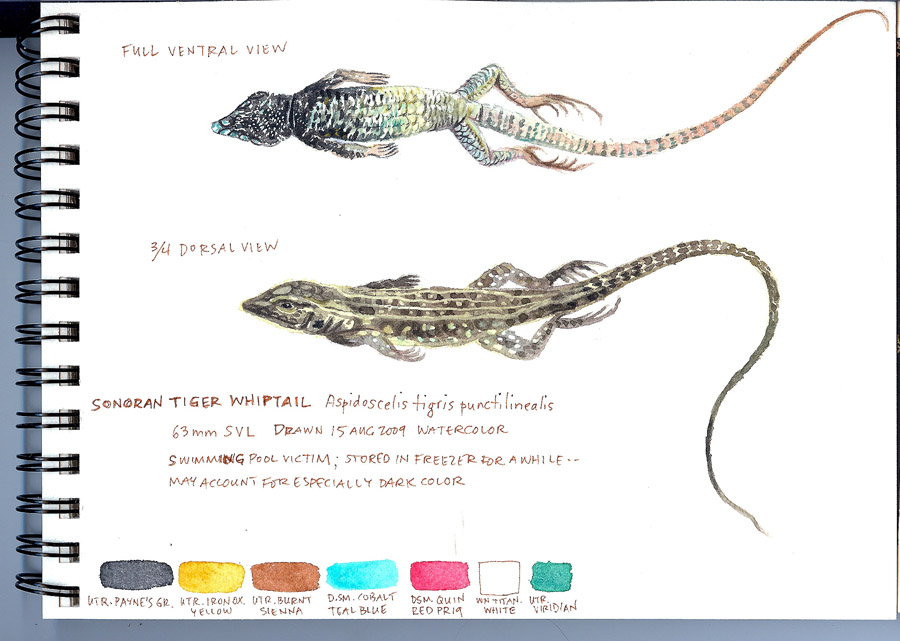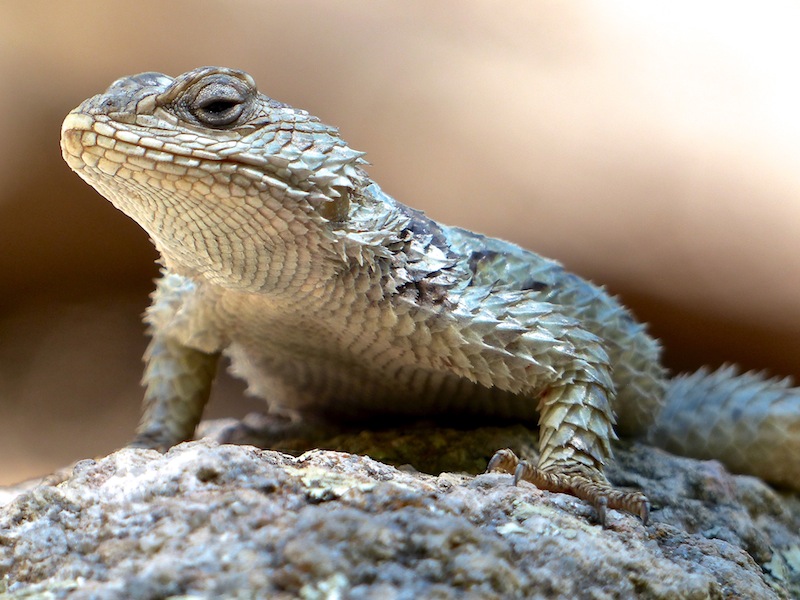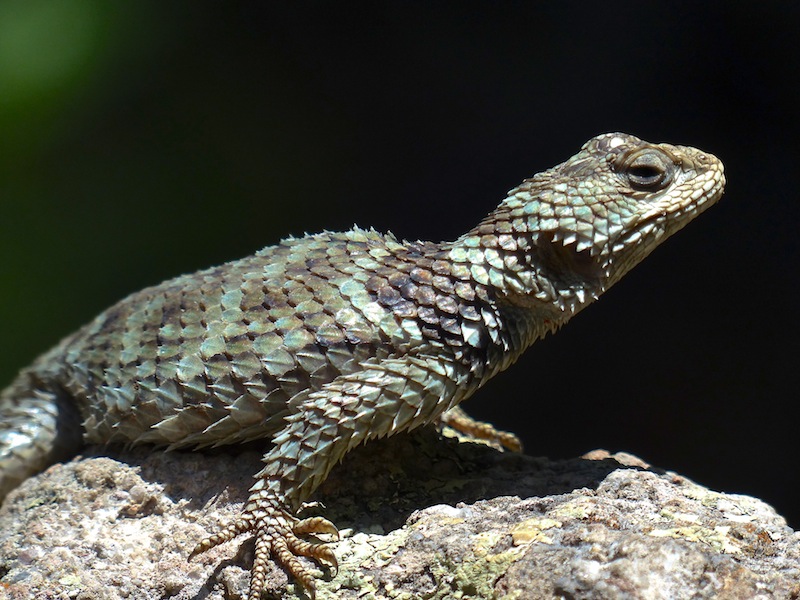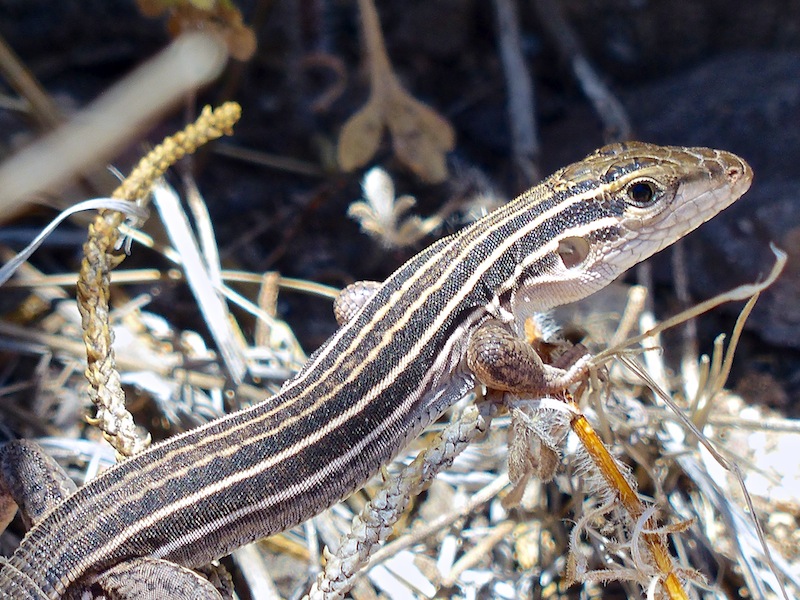Golden sea-planes in the pool
The New Camera has enabled me to take shots that the beloved, well-used but limited Old Camera couldn’t handle. Both are pretty good at macro, but zoom is the strength of the new camera. Effective zoom has made it possible for me to get a shot of something I’ve wanted to capture for a long time: the lovely paper wasps who float like little golden sea-planes on the surface of the pool.
Above, Paper Wasp afloat: no pontoons needed — its light body weight, waxy coating, and ability to create floatation cushions under its feet by not breaking surface tension, enable it to bob on the water while it collects mouthfuls to build with — you can see from the surface distortion in the photo above that this wasp has its mouthparts on the water, actively taking it in. Once it’s tanked up, the insect will rise nearly vertically off the surface to fly back to the nest. They almost never swamp, even in the chop I make swimming laps.
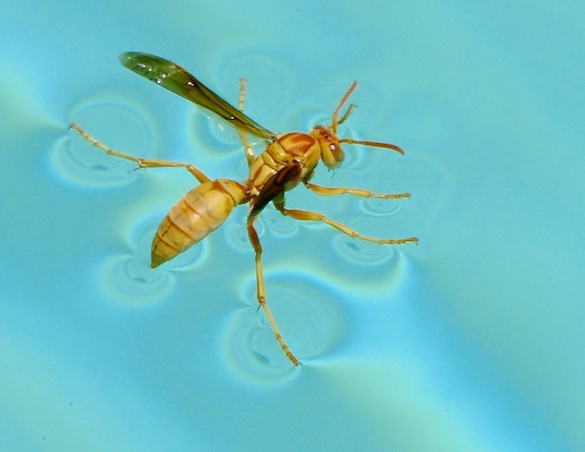 These golden sea-planes are Polistes wasps, commonly called Paper Wasps because of the papery, multi-cellular nests they build. Ours are probably Polistes flavus, but I’d need confirmation from someone who knows more about wasps than I do, to be certain. They seem to be peaceable sorts, and tolerate us moving around their space. In our experience, they’ve never acted aggressively, even once when E was tugging up the dead lemon grass where unbeknownst they’d built their nest. A few of them flew up and out of the fibrous clump. He scampered away, but there was no trouble — none of them even bothered to escort him away from the scene. Paper wasps are good for a garden: the adults drink plant nectar (and hummingbird food) for their own nutrition, but they are tireless predators of small voracious caterpillars and other soft-bodied insects which they prepare by chewing and deliver as food balls to their young waspy larvæ.
These golden sea-planes are Polistes wasps, commonly called Paper Wasps because of the papery, multi-cellular nests they build. Ours are probably Polistes flavus, but I’d need confirmation from someone who knows more about wasps than I do, to be certain. They seem to be peaceable sorts, and tolerate us moving around their space. In our experience, they’ve never acted aggressively, even once when E was tugging up the dead lemon grass where unbeknownst they’d built their nest. A few of them flew up and out of the fibrous clump. He scampered away, but there was no trouble — none of them even bothered to escort him away from the scene. Paper wasps are good for a garden: the adults drink plant nectar (and hummingbird food) for their own nutrition, but they are tireless predators of small voracious caterpillars and other soft-bodied insects which they prepare by chewing and deliver as food balls to their young waspy larvæ.
(Both photos A.Shock — Do click to enlarge, especially the upper one. There’s lots of good detail to be gained, like sparly water drops on its abdomen.)

